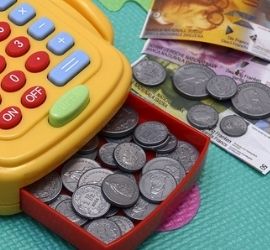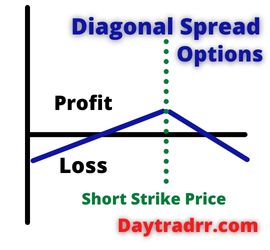What Is Painting the Tape?
 Painting the tape is a kind of market manipulation in which market participants try to affect the price of a security. One method is by purchasing and selling it among themselves in order to create the illusion of significant trading activity. The purpose of painting the tape is to create the perception of increasing interest in a company. Ultimately, the activity will entice new investors to acquire shares, causing the price to rise.
Painting the tape is a kind of market manipulation in which market participants try to affect the price of a security. One method is by purchasing and selling it among themselves in order to create the illusion of significant trading activity. The purpose of painting the tape is to create the perception of increasing interest in a company. Ultimately, the activity will entice new investors to acquire shares, causing the price to rise.
Because it produces false pricing, painting the tape is an unlawful act that is forbidden by the Securities and Exchange Commission (SEC). The SEC controls and monitors financial market activities to guarantee that trading takes place in a fair and orderly way.
The majority of market manipulation activities will be directed toward more obscure and low-volume assets. For example, over-the-counter (OTC) stocks, since they face less regulation and attention Additionally, their lower volume provides a more fertile background for market manipulation strategies. There is a high potential cost of attempting to manipulate the price or volume of a security with a high market capitalization. This is especially true of market manipulation efforts that involve painting the tape.
Painting the Tape – Origins of the Term
The term originated when stock prices were transmitted over telegraph wires and printed onto a ticker tape. This method was used for almost a century – from roughly 1870 until 1970. It represented the first electrically specialized financial communications media, delivering stock price information across telegraph lines. It was made up of a paper strip that was fed through a stock ticker machine. The output tape displayed shortened business names as alphabetic symbols followed by numeric stock transaction price and volume statistics. The name “ticker” was derived from the sound emitted by the printing machine.
Painting the Tape – Common Schemes
Market manipulators understand that jumps in trading volumes often draw the attention of investors. Painting the tape boosts volume and attracts investors, who may subsequently drive up the price. Market manipulators who are painting the tape will subsequently sell their assets to investors who are ignorant of the manipulation, When the manipulation ends, the stock price generally falls, sometimes precipitously. These investors are left holding securities at considerably cheaper prices. This is because aside from the manipulation, there were no other fundamentals to justify a higher price.
False Trading
The simplest and most typical market manipulation that involves painting the tape is to artificially increase a security’s trading volume. Many traders, particularly day traders, are drawn to securities when there is a rapid increase in volume considerably above the daily norm. This attraction usually results in a rise in the price of an asset, allowing market manipulators to sell their holdings at a higher price.
False trading may occur when brokers or other experienced market participants agree to purchase and sell a certain stock among themselves. The stock then looks to have created a high level of activity, reflecting the company’s health and prospective growth. This volume, however, is due to it being moved between brokers rather than to general business development.
Marking the Close
Another strategy involving painting the tape is to push the price of a security up immediately before the market closes when volumes are often lower. This effort results in a potentially higher closing price, which can often influence market sentiment. This practice can inflate the trading price over the next few trading sessions. Closing prices are widely reported in the media. As a result, Investors pay careful attention to closing prices since they are extensively publicized. Because most securities are valued based on their closing prices, manipulators use this strategy to increase the market value of their holdings.
Matched Orders & Wash Trading
When an investor buys and sells the same securities investment at the same time, this is known as wash trading. The IRS calls this a wash sale since purchasing the same security wipes out the sale of that security. It’s also known as round-trip trading since you wind up back where you started – with shares of the same investment in your portfolio. However, wash trades may be used to manipulate the market. In order to influence pricing or trading activity, investors can buy and sell the same securities. The purpose may be to stimulate purchasing in order to raise prices or to encourage selling in order to lower prices.
Wash trading is prohibited by the Commodity Exchange Act. Prior to the Act’s implementation, dealers often utilized wash trading to influence markets and stock prices. The Commodity Futures Trading Commission (CFTC) also enforces wash trading restrictions. There are guidelines in place prohibiting brokers from benefitting from wash trade activity.
Example of Painting the Tape
Assume that a pair of stockbrokers, A and B, want more people to purchase UpTick Company shares. They decide to paint the tape by purchasing large blocks of Uptick Company shares from each other. As a result, the activity causes the ticker to display a significant increase in trading activity for the company. The goal is that naive investors would see the increase in activity, believe something is up, and purchase the stock. In turn, this raises the price of Uptick Company shares, which is exactly what the two brokers desire. They earn illicit profits from the sale of their stock which they quickly sell once the price rises.
Painting the Tape – Real-world Example
The Securities and Exchange Commission (SEC) filed an enforcement action against the stock company Montgomery Street Research in late 2014. The proprietor of the company reportedly manipulated the market for a publicly listed stock for which he was looking for investors. Following a company’s hiring of Montgomery to assist in two private placement offerings, the firm’s owner allegedly engaged in wash trading. This involves the near-simultaneous purchase and sale of a security to make it appear actively traded, without any actual change in ownership of the securities. Montgomery, according to the SEC, engaged in about 100 wash transactions in which the sale order arrived within 90 seconds after the purchase order for the shares. According to the SEC, the price and amount of securities acquired and sold were substantially equal for all buys and sells. Aside from that, the stock was seldom traded.
Thomas Krysa, an Associate Director of Enforcement at the SEC, explains that wash trading obscures whether there is truly market interest in the stock:
“Wash trading is an abusive practice that misleads the market about the genuine supply and demand for a stock.”
Utilizing wash trading, the SEC says that Montgomery Street Research raised more than $2.5 million from investors. (Source: classlawgroup.com)
Up Next: What Is Segment Margin?
 Segment margin is the amount of profit or loss generated by one component of a firm. Knowing the gross margin for the whole firm is not usually sufficient in huge corporations. However, knowing the segment margins for each division of the firm offers a more realistic view. It can help identify both expenditures and sales where the company is making the most value as well as its strengths and weaknesses. Segment margin may also be used to calculate a company’s profit for distinct geographic areas. Further, analyzing segment margins might help determine how vulnerable a company’s total gross margins are. In general, publicly traded corporations are required by the Securities and Exchange Commission to disclose the profitability of business sectors.
Segment margin is the amount of profit or loss generated by one component of a firm. Knowing the gross margin for the whole firm is not usually sufficient in huge corporations. However, knowing the segment margins for each division of the firm offers a more realistic view. It can help identify both expenditures and sales where the company is making the most value as well as its strengths and weaknesses. Segment margin may also be used to calculate a company’s profit for distinct geographic areas. Further, analyzing segment margins might help determine how vulnerable a company’s total gross margins are. In general, publicly traded corporations are required by the Securities and Exchange Commission to disclose the profitability of business sectors.
Segment margin is a profitability metric. However, it only measures the profit or loss made by a specific product line or geographic area of a company. As a result, the segment margin is primarily used as a tool to compare the profitability of a company’s various components. The metric is very useful for big corporations with many business lines or a presence in multiple geographic locations.




